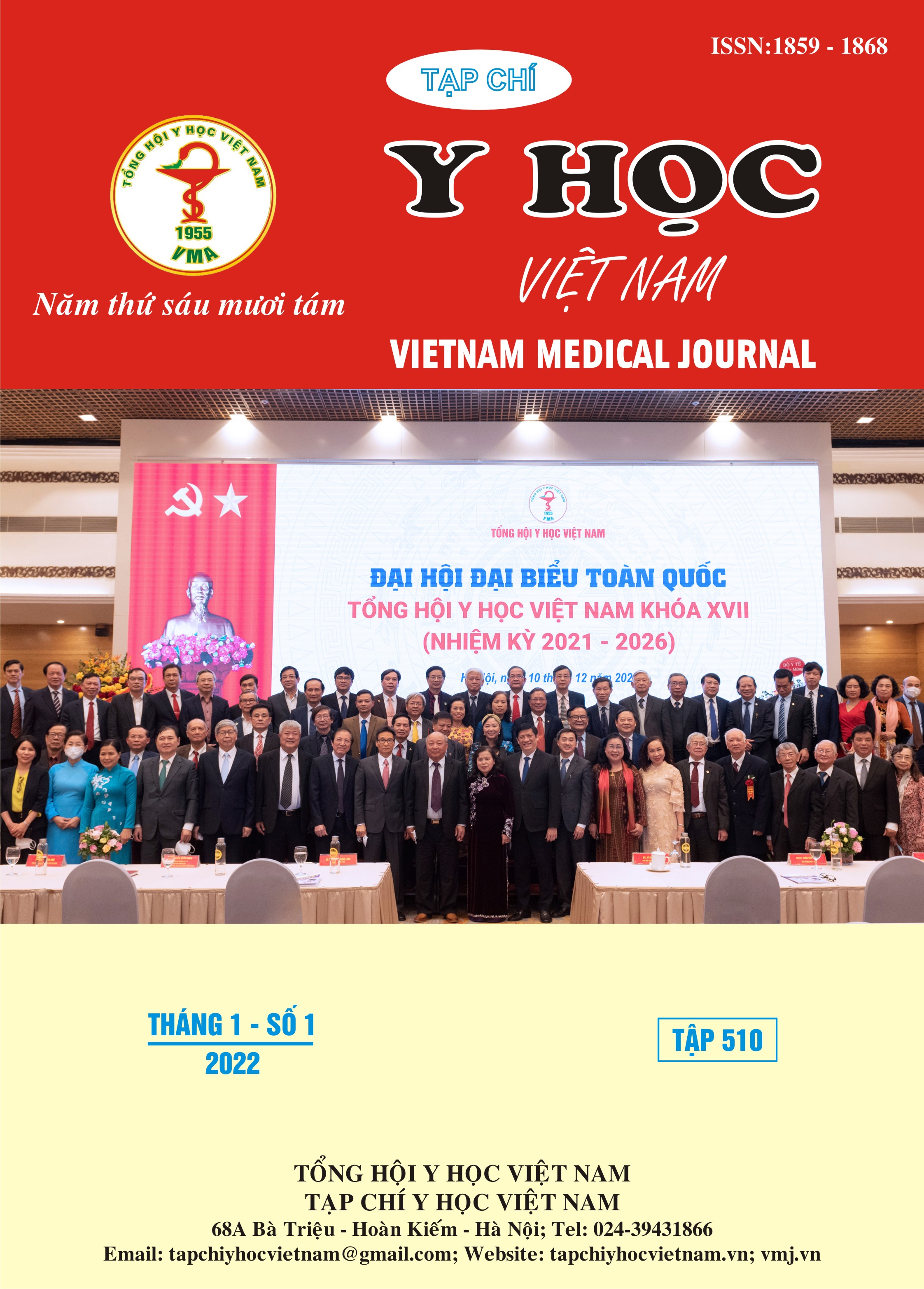DETERMINE THE CLINICAL FEATURES AND EFFECTS OF AUDITORY REHABILITATION IN CHILDREN AFTER OF COCHLEAR IMPLANTATION
Main Article Content
Abstract
Purpose: This study aimed to determine the clinical features and effects of auditory rehabilitation in children after of cochlear implantation. Study design: Retrospective and prospective descriptive study. Method: Determine the clinical features and effect s of auditory rehabilitation in children according to the CAP scale. Result: Thirty nine children with congenital deafness (20 boys and 19 girls) who received cochlear implants at the Ho Chi Minh City Otorhinolaryngology Hospital (January 2018-April 2020) were included in this study. Age at CI ranged from 1 to 13 years (mean age was 3.92 ±2.87 years) and most underwent CI at the age of 3 years or less (61.54%). Number of children with cochlear implants one ear is 23/29 children (58.97%). The number of children with bilateral CI are 16/29 children (41.03%). At 1 year after CI, all children reached the CAP score at 5 points or more and 87.18% of cases had CAP score from 6 to 7 points. The mean CAP scores at 12 months after CI were 6.18 ±0.64 points. Conclusion: Thirty nine children with congenital deafness (20 boys and 19 girls) who received cochlear implants were included in this study. Age at CI ranged from 1 to 13 years and most underwent CI at the age of 3 years or less (61.54%). Number of children with cochlear implants one ear is 23/29 children (58.97%). The CAP scores of all children tended to increase sharply and return to near normal within 1 year after CI. Children with bilateral CI had better auditory performance than children with unilateral CI.
Article Details
Keywords
hearing loss, congenital deafness, cochlear implantation (CI), auditory rehabilitation
References
[2] Quỹ Dân Số Liên Hiệp Quốc-Unfpa Quỹ (2009), "Một số kết quả chủ yếu từ tổng điều tra dân số và nhà ở Việt Nam năm 2009", Người khuyết tật Việt Nam, 16-17.
[3] G. J. Basura, R. Eapen& C. A. Buchman (2009), "Bilateral cochlear implantation: current concepts, indications, and results", Laryngoscope, 119.(12) 2395-401.
[4] S. Liu, F. Wang, P. Chen, N. Zuo, C. Wu, J. Ma, J. Huang& C. Wang (2019), "Assessment of outcomes of hearing and speech rehabilitation in children with cochlear implantation", J Otol, 14.(2) 57-62.
[5] N. Yıldırım Gökay& E. Yücel (2021), "Bilateral cochlear implantation: an assessment of language sub-skills and phoneme recognition in school-aged children", Eur Arch Otorhinolaryngol, 278.(6) 2093-2100.
[6] Q. Guo, J. Lyu, Y. Kong, T. Xu, R. Dong, B. Qi, S. Wang& X. Chen (2020), "The development of auditory performance and speech perception in CI children after long-period follow up", Am J Otolaryngol, 41.(4) 102466.
[7] S. J. Dettman, R. C. Dowell, D. Choo, W. Arnott, Y. Abrahams, A. Davis, D. Dornan, J. Leigh, G. Constantinescu, R. Cowan& R. J. Briggs (2016), "Long-term Communication Outcomes for Children Receiving Cochlear Implants Younger Than 12 Months: A Multicenter Study", Otol Neurotol, 37.(2) e82-95.
[8] M. Y. Kwak, J. Y. Lee, Y. Kim, J. W. Seo, J. Y. Lee, W. S. Kang, J. H. Ahn, J. W. Chung& H. J. Park (2020), "Long-term Change in the Speech Perception Ability in Pediatric Cochlear Implants and the Effect of the Age at Implantation", Otol Neurotol, 41.(6) 758-766.
[9] H. Y. Fang, H. C. Ko, N. M. Wang, T. J. Fang, W. C. Chao, Y. T. Tsou& C. M. Wu (2014), "Auditory performance and speech intelligibility of Mandarin-speaking children implanted before age 5", Int J Pediatr Otorhinolaryngol, 78.(5) 799-803.


